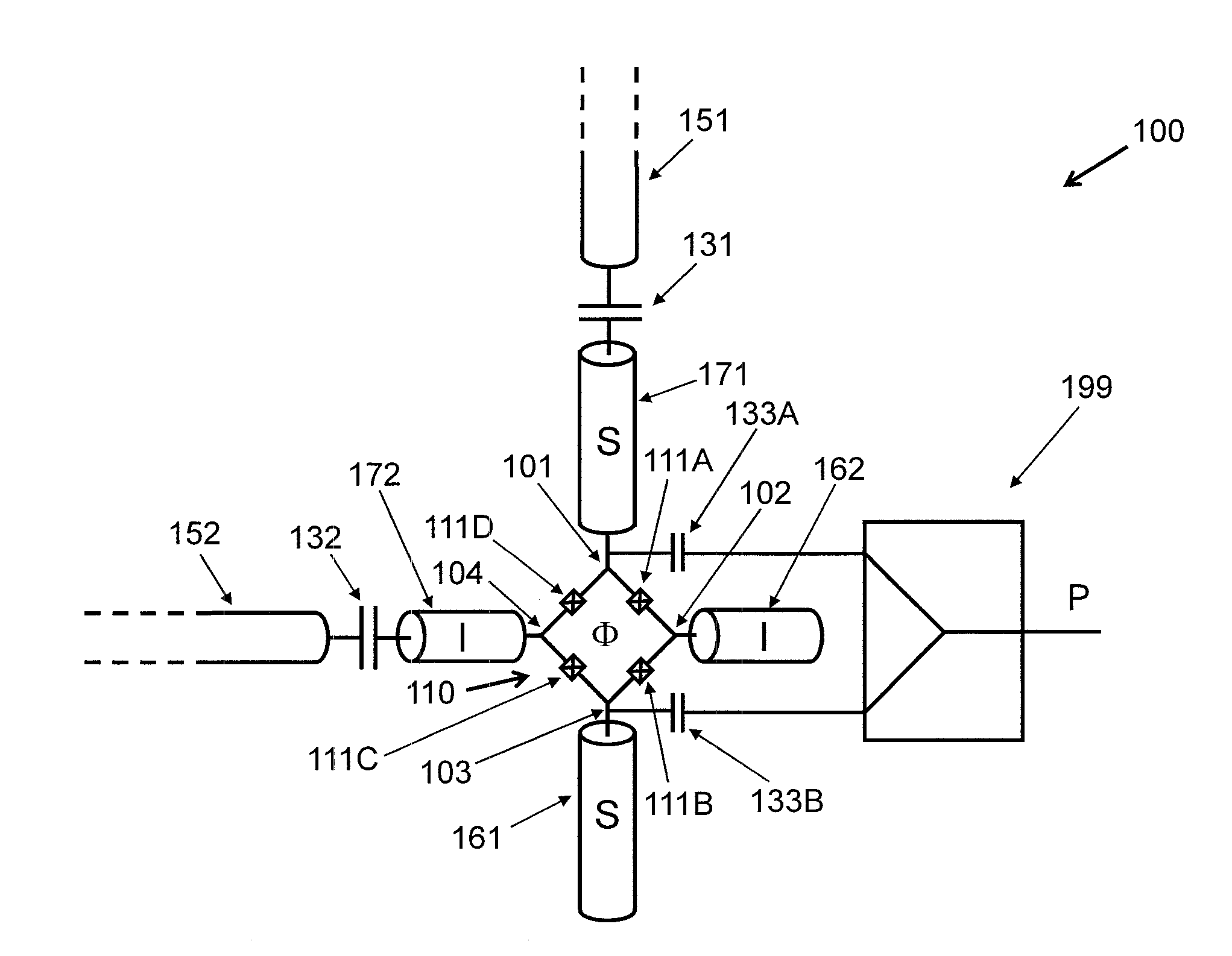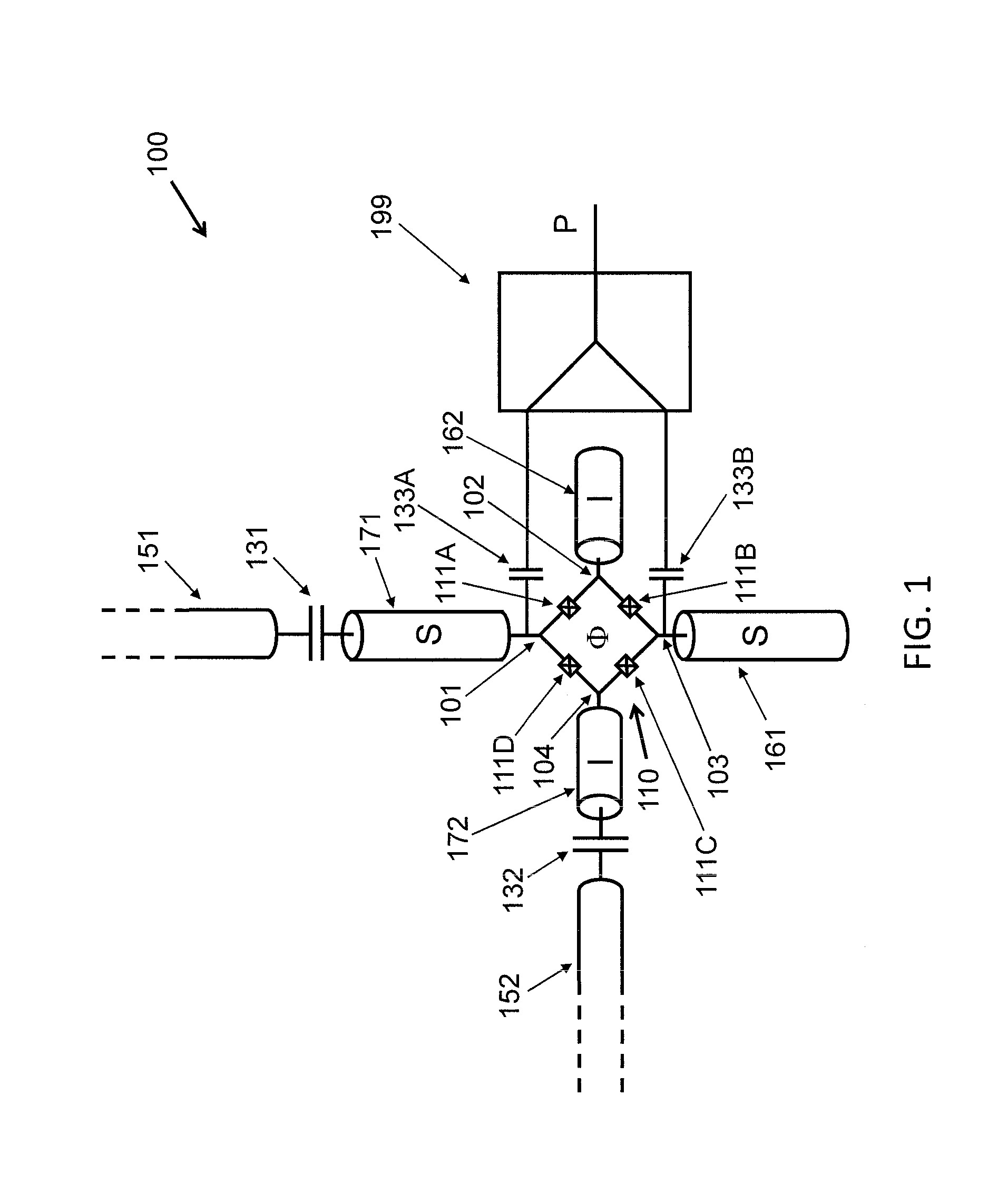Driving the common-mode of a josephson parametric converter using a three-port power divider
a common-mode, three-port technology, applied in parametric amplifiers, modulation transference by superconductive devices, pulse techniques, etc., can solve problems such as reducing the dynamic range of the jpc, limiting the scalability of hardware, and adding complexity to the design and fabrication process
- Summary
- Abstract
- Description
- Claims
- Application Information
AI Technical Summary
Benefits of technology
Problems solved by technology
Method used
Image
Examples
Embodiment Construction
[0017]The present principles are directed to driving the common-mode of a Josephson Parametric Converter (JPC) using a three-port power divider.
[0018]In the JPC, the incoming and outgoing signals to (in) and from (out) of the device travel on the same transmission lines and feedlines.
[0019]In an embodiment, we couple the pump drive and the signal (or idler) tones to the JPC using separate feedlines and coupling capacitors. The signal and idler tones would continue to be fed through the coupling capacitors of the JPC resonators, but the pump drive would be fed to the JPC through a lossless on-chip three-port power divider capacitively coupled to the Josephson ring modulator (JRM) of the JPC. The power divider would split the input signal equally between the two output ports and the split signals would have equal phase (in order to excite the common mode).
[0020]The present principles provide many attendant advantages over the prior art. Some of these many attendant advantages will now...
PUM
 Login to View More
Login to View More Abstract
Description
Claims
Application Information
 Login to View More
Login to View More - R&D
- Intellectual Property
- Life Sciences
- Materials
- Tech Scout
- Unparalleled Data Quality
- Higher Quality Content
- 60% Fewer Hallucinations
Browse by: Latest US Patents, China's latest patents, Technical Efficacy Thesaurus, Application Domain, Technology Topic, Popular Technical Reports.
© 2025 PatSnap. All rights reserved.Legal|Privacy policy|Modern Slavery Act Transparency Statement|Sitemap|About US| Contact US: help@patsnap.com



